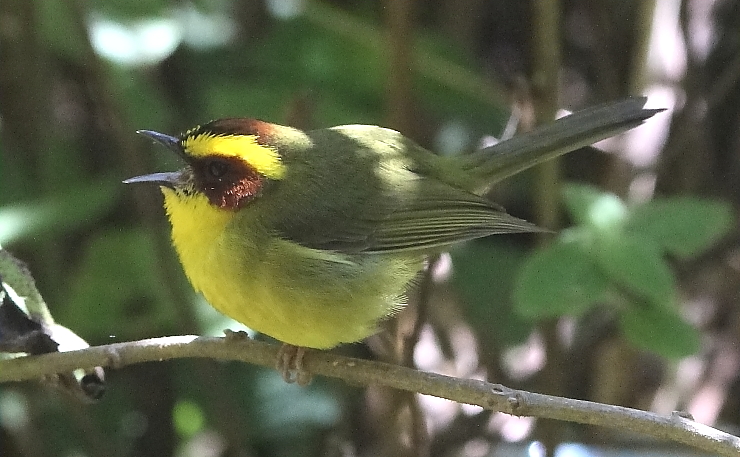
Last week, I received an email from an American couple that has recently moved to Morelia; they found me right here on 10,000 Birds. (Fame suits me, I must humbly admit.) Although birding is not their first reason for moving here, they are enjoying meeting the lovely locals, such as the Broad-billed Hummingbird and Vermilion Flycatchers. I warned them that, impossible as it may seem, they will someday tire of seeing both here. (Sort of like Trump’s never-achieved “too much winning”.)
This particular couple has now lived in eight countries, on three continents. That is probably not a model many of us can achieve — although it sounds like fun to me! But there are apparently almost a million Americans that have settled here in Mexico, far beyond any other country’s total. Most of them came here after retiring, although some, like yours truly, are here for work. Those who retire here usually did so because their retirement money will go so much further in Mexico. This is particularly true when it comes to medical and dental care, domestic service, and in-home care, all of which can cost as little as one-tenth what they would cost in the U.S. You would also be amazed at how little auto mechanics, plumbers and electricians charge here.
An important, but less-recognized, benefit to moving to another country has to do with brain health. Many studies have shown that a life rich in new experiences, and especially learning a new language late in life, can help stave off the onset of dementia. Of course, it is possible to live in Mexico while avoiding many new experiences; but why would you want to? (The couple who contacted me eventually settled in Morelia precisely after deciding not to choose one of Mexico’s americanized areas. Good choice!)
But I would like to suggest that birders have even more reasons to move here. Every lifer is, of course, a new experience, and Mexico offers a lot of them!
Every year, the top birders in Mexico surpass the species totals of their counterparts in the United States, and double the totals of Canada’s best. This is in spite of the fact that Mexico’s birding infrastructure is far inferior to that of the U.S. More telling still, they are finding higher numbers of species in a country that is only one-fifth the size of its northern neighbors.
And since Mexico’s topography has been compared to a crumpled-up sheet of paper, most places offer many biomes within a short distance. Travel ten hours from Ohio to Missouri or Alabama, which I have done, and you won’t find all that much variation in the species you can see. But a one hour drive from my home can take to me to the low desert, cool coniferous forest, cloud forest, grasslands, temperate forest, or wetlands. Which is how I was able to see 289 species last year, without ever leaving that small radius. And remember, as you get to know all those new species with their identifying markings, songs, and calls, you will be enhancing your brain health!
You could probably achieve an even higher diversity of species in some other areas of the world, such as Costa Rica, Colombia, Brazil, or Borneo. But Mexico has one obvious advantage for Americans and Canadians: I can drive to the U.S. border in twelve hours, or fly there in three. That must be why the number of North American expats living here far outnumber those living anywhere else.
What are some of the options for birders considering such a move? First, you should know that there are indeed places where little or no language-acquisition will be required. The population of San Miguel de Allende, 2 hours north of here, seems to be about 50% foreigners. And, they have Mexico’s only Audubon club (English-only, as far as I can tell from a distance), with a lovely birders’ park! Ajijic, just south of Guadalajara on Lake Chapala, is perhaps even more dominated by Americans and Canadians. (I used to have my U.S. taxes done there.) Lots of birders are there, too, although I don’t know if they have organized much. And for those who really want to keep one foot in the U.S., you could try Rosarito in Baja California, only two hours south of the border. Mexican friends told me there was a gated community there with no Mexicans allowed, but I sincerely hope that was an urban legend.
Other places with large expat communities include Puerto Vallarta (great birding opportunities!), Cuernavaca, and the lovely town of San Cristobal de las Casas near Mexico’s southern border with Guatemala. No doubt there are lots of foreigners in Cancún and Cabo San Lucas as well; and anywhere with lots of tourists will also have lots of options for getting by without learning Spanish.
But… I would say that learning the language, and culture, is half the fun. Or maybe almost all the fun. And that will happen when you are surrounded by Mexicans, not expats. If you can accept that, then the sky is the limit.
If you like heat and humidity, the tropics will certainly give you wonderful opportunities for meeting beautiful and exciting birds. And in Mexico, anywhere near a coast, other than Baja California and Sonora, is tropical. The Gulf Coast state of Veracruz is legendary for the number of migratory birds that pass through each fall and spring, as the name “River of Raptors” attests. But if you want Mexico-only endemics, the southwestern states of Oaxaca, Guerrero, Morelos, Colima, and Michoacán are your best choices. The Yucatán peninsula (think Cancún and Tulum) also has a good number of endemics. In general, eastern Mexico has more species, but the majority are shared with Texas, Central America, or both.
And as for me, would I change countries just for the birds? No, I would not. Why should I? I’m already here!
____________________________________________________________________________________________________________
As a final note, I know I’m supposed to show pretty bird pictures here each week. As it happens, I had a great outing last week (to El Temascal), but didn’t come away with that many really good pictures, which inspired me to get talkative this post. But I’ll share a with you my few best shots before ending; I will not shirk my responsibilities.
Before I even left town, I was shocked to see a Great Horned Owl perched beside the road. When he moved to a nearby branch, he literally positioned himself above the road! His stern expression, however, remained the same.
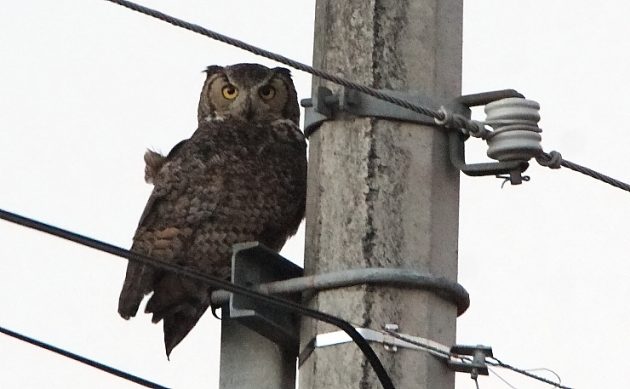
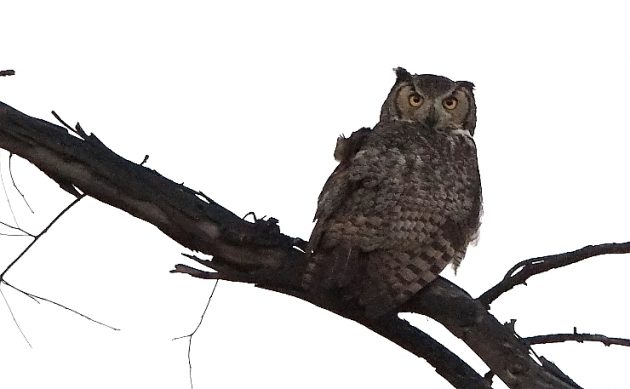
MacGillivray’s Warblers are rather common winter visitors here, but they almost never come out of the brush for a good portrait. This one is by far my best photo, so far, of this little skulker.
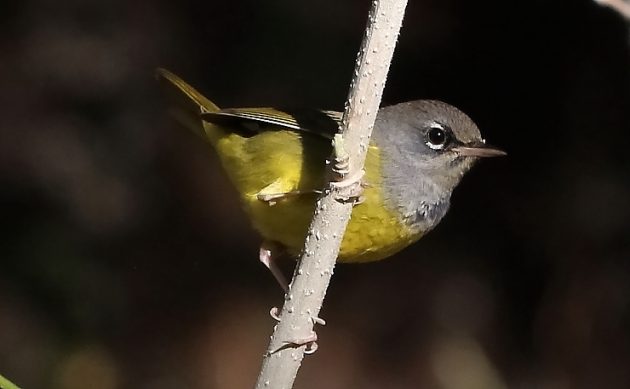
Like the MacGillivray’s Warbler, Townsend’s Warblers are winter visitors here — expats of sorts, if you please. Also like the MacGillivray’s, they have been denying me good photos for far too long. So I’m pretty happy about these.
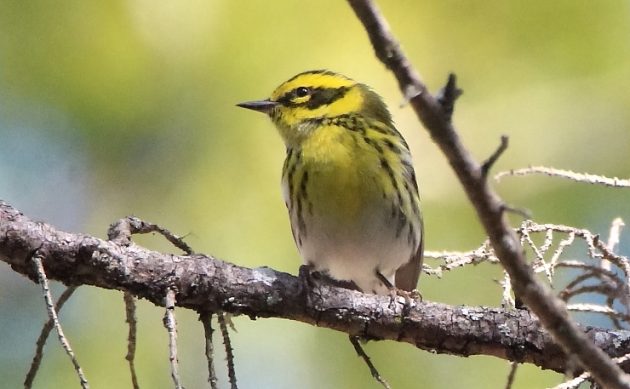
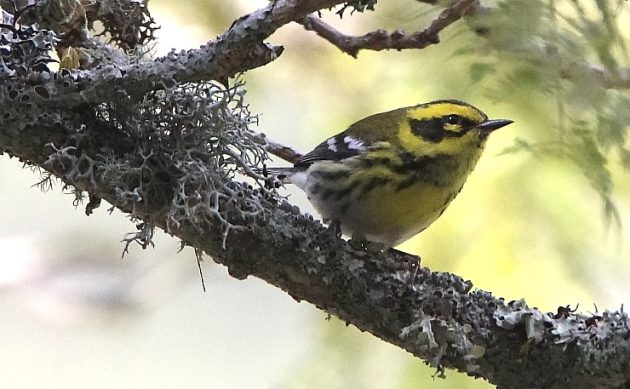
The Golden-browed Warbler is only found in Mexico and Central America. It is decidedly not an expat. It is also a reliable species at El Temascal, and very reliably adorable — adorable enough to start and finish this post with this one.
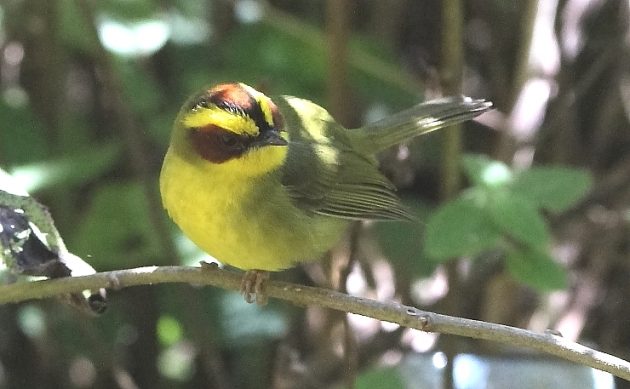













Sure, why not. Can you think of a better reason?
Well, I’m a missionary and a birder, so I have two excellent reasons!